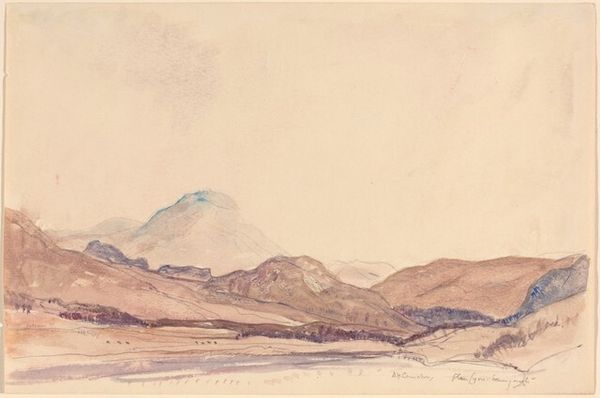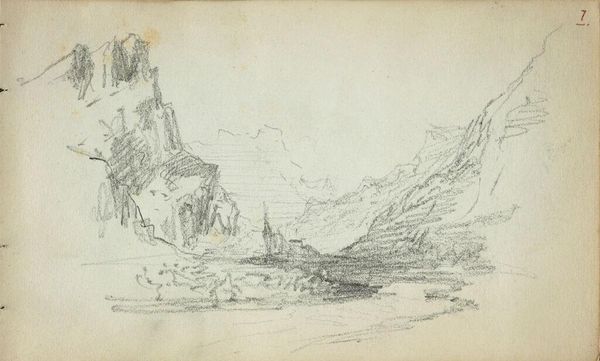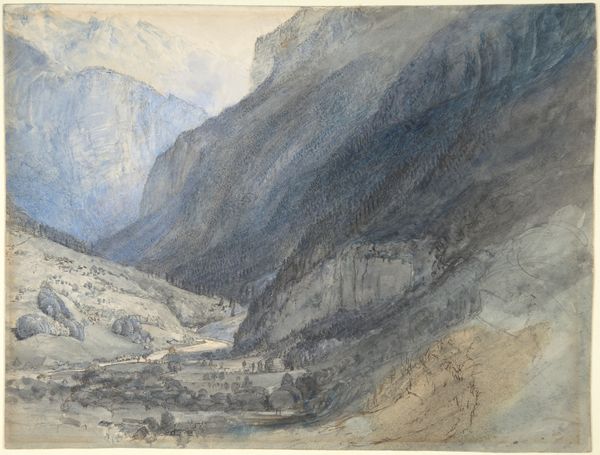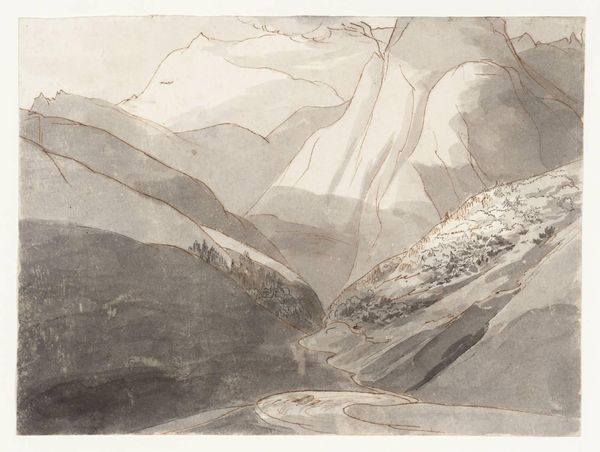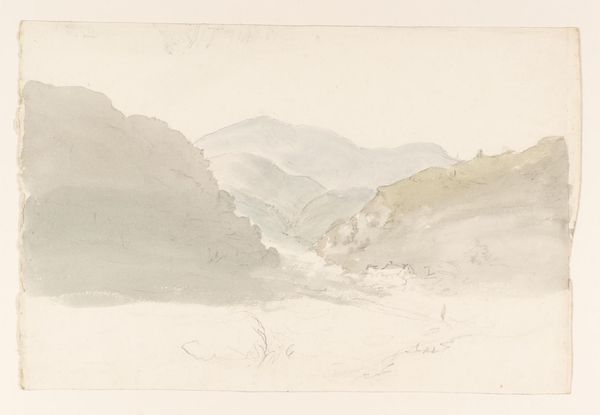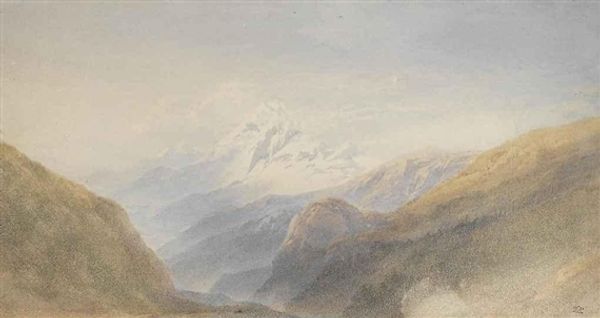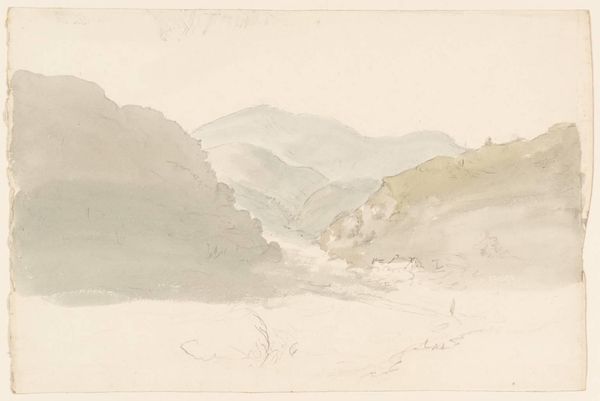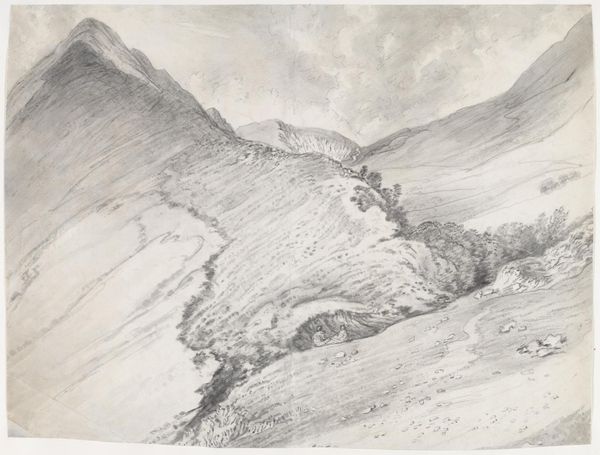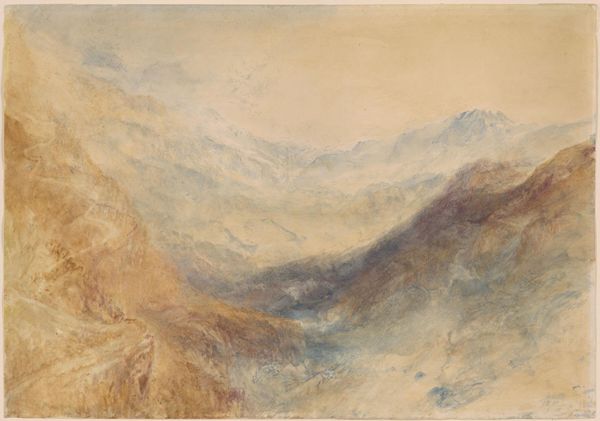
Copyright: Public Domain: Artvee
Editor: Here we have J.M.W. Turner's "View in the St. Gotthard Pass, Switzerland," created in 1842 with watercolor. It feels expansive and isolating at the same time. How do you interpret this work? Curator: Turner's landscapes are never simply landscapes. The Gotthard Pass itself is a potent symbol. What do mountains mean to us? Editor: Strength, resilience, timelessness, I suppose. Obstacles? Curator: Precisely. Mountains, like the sea for Turner, represented the sublime – a confrontation with nature's power that both awes and terrifies. The pass is not just a geographical location, but a passageway, a threshold. Think of it as a liminal space between states of being. What imagery comes to mind? Editor: Something epic. A pilgrimage? The lone traveler braving the elements? Curator: Yes, and perhaps the spiritual journey is just as arduous as the physical one. Notice how the washes of color – the blues and browns – bleed into one another, blurring the distinctions. Is this only about nature's splendor or the mind encountering something so vast that distinctions become lost? This piece reveals cultural memory through nature, in all its symbolic complexity. Editor: So it's not just a pretty landscape. It’s about human psychology in relationship to this powerful landmark. The way the mountain blends into the sky almost makes it divine, right? Curator: Precisely! Do you think you see echoes of Romanticism within the representation? Editor: Definitely, and I understand how Turner’s interest in Romanticism infuses a traditional landscape with human symbolism. I will certainly look at landscapes differently from now on!
Comments
No comments
Be the first to comment and join the conversation on the ultimate creative platform.

